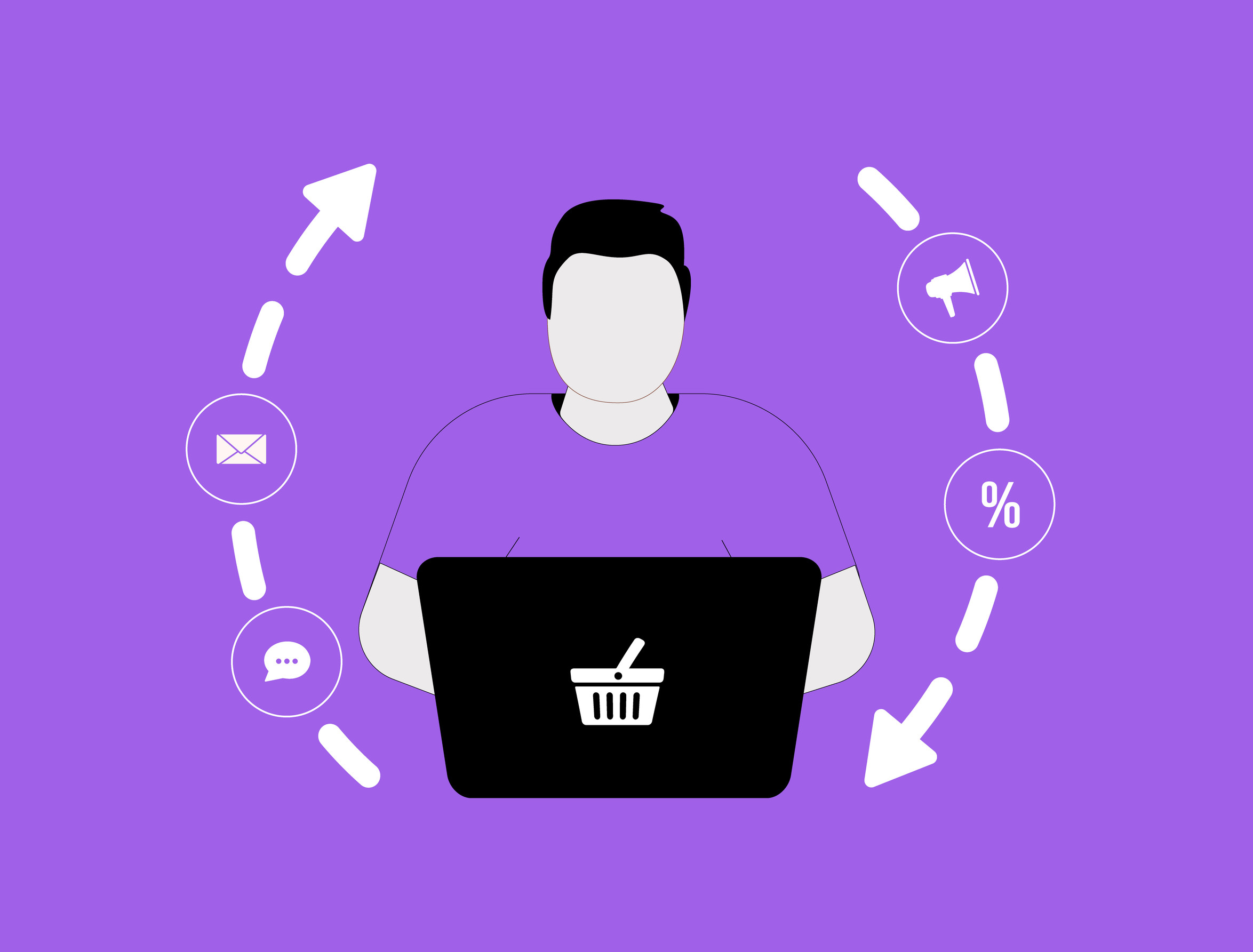Retargeting is a powerful strategy in digital marketing. It helps businesses reconnect with people who have already shown interest in their products or services.
When someone visits a website but doesn’t make a purchase, retargeting allows brands to remind them about what they left behind. This is done by showing ads on other platforms they use, like social media or search engines.
It’s an effective way to stay in front of potential customers and encourage them to take action. For many businesses, retargeting plays a key role in boosting sales and improving customer engagement.
Whether big or small, brands can use this tool to make sure they stay top of mind.
This blog post will discuss what retargeting is, how it works, and why it matters in digital marketing.
What is Retargeting?
Retargeting is a digital marketing technique that involves showing ads to people who have previously visited your website or interacted with your brand online.
Ever noticed ads following you around after you check out a product online? That’s retargeting at work. It’s an effective way to re-engage potential customers who didn’t convert on their first visit, bringing them back to your website to complete an action, like making a purchase.
For small businesses, retargeting means getting another chance to engage users who’ve already shown an interest in your product or service—which is crucial in today’s competitive market.
How Does Retargeting Work?
At its core, retargeting relies on cookies or tracking pixels. When a visitor lands on your website, a small snippet of code (retargeting pixel) is placed in their browser. This tracks their activity and enables you to serve them targeted ads later.
Here’s how it works step by step:
- Visitor Lands on Your Website: A user visits your site but doesn’t take the desired action, like signing up for your service or buying a product.
- Tracking Begins: A tracking cookie or pixel tags the visitor anonymously.
- Ads Follow Them: The visitor sees personalized ads for your business while browsing other websites, scrolling social media, or watching videos online.
- Visitor Returns and Converts: The ad reminds the user of your product or service, prompting them to return to your website and complete the action.
Platforms like Google Ads, Facebook, and Twitter offer robust retargeting options, making it easy to reach your audience where they spend their time.
Why Should Small Businesses Invest in Retargeting?
If you’ve invested time and money bringing traffic to your site, retargeting helps you maximize that investment. Here’s why it matters for small businesses:
- Improves Conversion Rates: Most people don’t convert on their first visit to a website. Retargeting keeps your brand top-of-mind and nudges potential customers toward making a purchase.
- Boosts Brand Awareness: When customers see your ads multiple times, they’re more likely to remember and trust your brand. Consistent exposure builds familiarity.
- Cost-Effectiveness: Retargeting targets warm leads—people already interested in your business. This makes it more efficient compared to cold advertising, where you’re reaching an entirely new audience.
- Encourages Customer Retention: Retargeting isn’t just for bringing customers the first time—it’s also great for encouraging repeat purchases or re-engaging lapsed customers.
For small businesses working within tight budgets, retargeting is an excellent way to achieve more with less.
How to Implement a Retargeting Strategy
Setting up a retargeting campaign might seem daunting, but it’s simpler than you think. Follow these steps to get started:
- Choose the Right Platform: Decide where to run your retargeting campaigns. Popular platforms include Google Ads, Facebook Ads, and LinkedIn. Each has unique benefits depending on where your audience spends their time.
- Set Clear Goals: Define what you want to achieve with retargeting—whether it’s more sales, newsletter sign-ups, or app downloads.
- Segment Your Audience: Group your visitors based on their behavior. For example, you can retarget people who abandoned their cart or spent significant time on particular product pages.
- Create Compelling Ads: Write attention-grabbing ad copy, highlight your unique value, and include a strong call to action (CTA). You can also use visuals like images or videos to make your ads more engaging.
- Set a Budget: Allocate your ad spend wisely to reach your target audience without overspending.
- Launch Your Campaign: Once everything is ready, go live! Monitor your campaigns regularly to ensure they’re performing as expected.
Best Practices for Retargeting
Effective retargeting requires more than just launching a campaign—it demands thoughtful optimization. Here are some tips for success:
- Segment Your Audience: Tailor your ads based on specific customer behaviors, like cart abandonment or browsing history. Personalized ads perform better.
- Don’t Overdo It: No one likes being bombarded with ads. Use frequency caps to limit how often your ads appear to avoid annoying your audience.
- A/B Test Your Ads: Experiment with different ad creatives, copy, CTAs, and targeting strategies to determine what resonates best with your audience.
- Offer Value: Include discounts, free trials, or other incentives to encourage conversions.
- Keep Branding Consistent: Your retargeting ads should align with your website’s branding to create a seamless customer experience.
Measuring Retargeting Success
To ensure your retargeting campaigns are delivering results, track their performance. Focus on these key metrics:
- Click-Through Rate (CTR): Measures how many people clicked on your retargeting ads.
- Conversion Rate: Evaluates how many of those clicks resulted in the desired action.
- Return on Ad Spend (ROAS): Indicates whether your campaign is delivering enough revenue to justify the expense.
- Frequency: Keeps track of how often users see your ads to avoid overexposure.
Use analytics tools provided by platforms like Google Ads or Facebook Ads Manager to monitor these metrics. Adjust your campaigns based on their insights to improve performance.
The Future of Retargeting
Retargeting isn’t static—it’s evolving with technology and consumer behavior. Here are some emerging trends to watch for:
- AI & Machine Learning: Smarter algorithms will make retargeting more precise, allowing businesses to deliver hyper-relevant ads.
- Cross-Device Targeting: Expect seamless retargeting as users switch between multiple devices like phones, tablets, and laptops.
- Privacy-Friendly Solutions: With growing concerns around privacy, platforms are developing newer, cookie-less retargeting solutions like Google’s Privacy Sandbox.
For small businesses, these innovations could make retargeting even more powerful, helping you compete with larger brands.
Take Action Today
Retargeting is more than just a marketing tactic—it’s a way to stay connected with your customers and drive meaningful results. For small business owners looking to enhance their digital marketing strategies, now is the time to act.
Start exploring retargeting for your business today, and watch as your conversions soar.
Are you ready to maximize your marketing potential? Visit SiteLeaper and take the first step toward smarter retargeting today!


